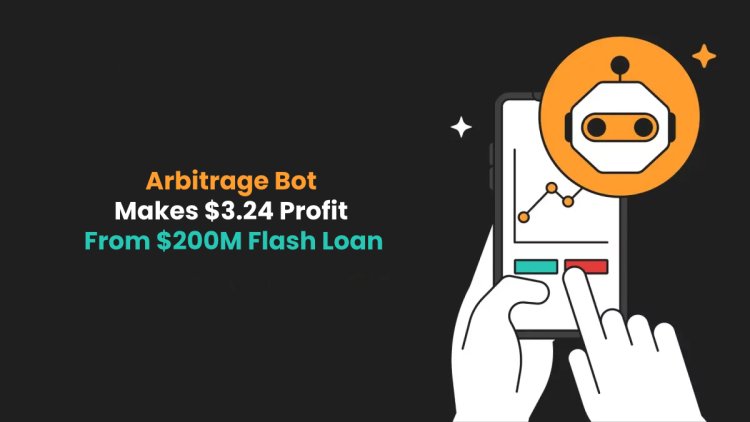Arbitrage Bot Makes $3.24 Profit From $200M Flash Loan
This blog delves into the mechanics behind this scenario, emphasizing the importance of precision in Crypto Arbitrage Trading Bot Development and Flash Loan Arbitrage Bot Development.
Share this Post to earn Money ( Upto ₹100 per 1000 Views )

The decentralized finance (DeFi) world is rife with opportunities, but it also presents some mind-bending scenarios. One such instance is when an arbitrage bot took out a massive $200 million flash loan, only to make a seemingly minuscule profit of $3.24. While the profit may appear underwhelming compared to the loan size, this event highlights the intricacies and razor-thin margins involved in flash loan arbitrage.
This blog delves into the mechanics behind this scenario, emphasizing the importance of precision in Crypto Arbitrage Trading Bot Development and Flash Loan Arbitrage Bot Development.
Understanding Flash Loans and Arbitrage
Flash loans are temporary, uncollateralized loans that must be repaid within a single blockchain transaction. They enable traders to borrow substantial amounts of money without needing collateral, as long as the loan is repaid nearly instantaneously. Arbitrage, on the other hand, involves profiting from price differences of the same asset across various markets or exchanges. When flash loans and arbitrage are combined, they become a potent strategy for traders to take advantage of these price discrepancies without requiring a significant initial investment.
The $200 Million Flash Loan: How It Worked
The idea of a $200 million flash loan resulting in just a $3.24 profit might seem puzzling at first. Here's an explanation of how it happened:
1. Loan Request: The arbitrage bot requests a $200 million flash loan, typically from a platform like Aave or dYdX.
2. Arbitrage Execution: The bot identifies a price discrepancy between two decentralized exchanges (DEXs) for a particular cryptocurrency. It buys low on one exchange and sells high on the other.
3. Repayment: The bot repays the $200 million loan, along with a small fee (usually a fraction of a percent).
4. Profit Calculation: After all fees and loan repayments, the botnets a profit of $3.24.
Why Such a Small Profit?
There are several reasons why the profit was so small compared to the loan amount:
- High Competition: Flash loan arbitrage is highly competitive, with multiple bots vying for the same opportunities. This competition often drives down profit margins.
- Execution Costs: The costs associated with executing trades, such as gas fees on the Ethereum network, can significantly eat into profits.
- Razor-Thin Margins: The price discrepancies exploited in arbitrage are often minimal, requiring large sums of money to generate even a small profit.
The Importance of Precision in Arbitrage Bot Development
The $3.24 profit from a $200 million flash loan underscores the need for precision in Crypto Arbitrage Trading Bot Development. When developing such bots, attention to detail is paramount. A small miscalculation or delay in execution can result in losses, especially when dealing with such large amounts of money.
Key considerations for developing a successful flash loan arbitrage bot include:
- Speed: The bot must execute trades rapidly to capitalize on fleeting price discrepancies.
- Accuracy: The bot needs to precisely calculate fees, slippage, and potential profits to ensure the trade is worthwhile.
- Risk Management: Even though flash loans are uncollateralized, there is still risk involved, particularly with network congestion or unforeseen market movements.
Conclusion
The scenario where an arbitrage bot makes just $3.24 from a $200 million flash loan might seem surprising, but it highlights the realities of Flash loan Arbitrage Bot Development. In the highly competitive DeFi landscape, success is measured not just by the size of the profit but by the bot's ability to execute flawlessly under pressure. As developers continue to refine these bots, the profit potential—however small—remains a testament to the power and precision of automated trading in the blockchain world.














